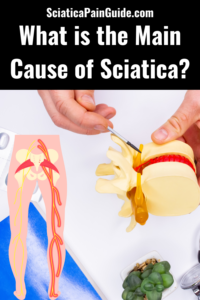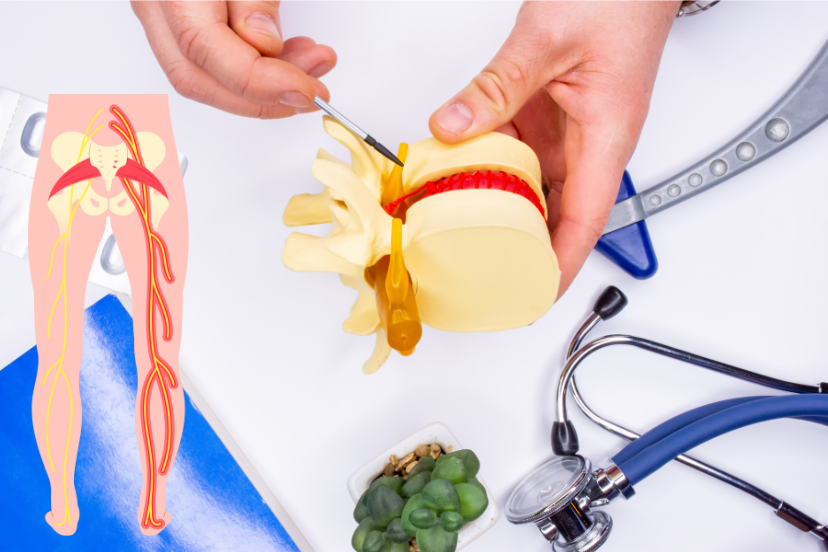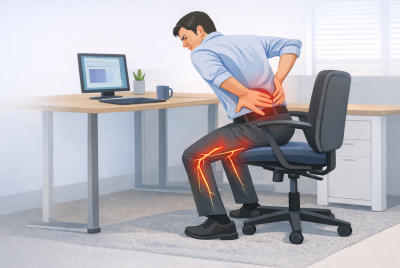What is the Main Cause of Sciatica
Discover what is the main cause of sciatica, from herniated discs to spinal stenosis. Learn how to manage and prevent this painful condition today! Have you ever experienced a sharp, shooting pain that runs from your lower back down through your leg? If so, you might be familiar with sciatica. But what exactly causes this uncomfortable and often debilitating condition? Let’s dive deep into the main causes of sciatica and explore ways to manage and prevent it.
Understanding Sciatica
What Causes Sciatica?
Sciatica isn’t a condition in itself but a symptom of underlying issues that affect the sciatic nerve. The main culprits are usually spinal problems, which we’ll explore in detail.
Herniated Discs
What are Herniated Discs?
Herniated discs, sometimes called slipped or ruptured discs, occur when the soft inner gel of a spinal disc pushes through a crack in its tougher exterior. This can put pressure on nearby nerves, including the sciatic nerve.
How Do Herniated Discs Cause Sciatica?
When a disc herniates, it can compress the sciatic nerve roots. This pressure causes inflammation, pain, and often numbness or tingling down the leg. It’s one of the most common causes of sciatica, particularly in younger adults.
Spinal Stenosis
What is Spinal Stenosis?
Spinal stenosis is a condition in which the spaces within the spine narrow, putting pressure on the nerves that travel through the spine.
How Does Spinal Stenosis Cause Sciatica?
When the spinal canal narrows, it can squeeze and irritate the sciatic nerve roots, leading to the characteristic pain and discomfort associated with sciatica. Due to age-related changes in the spine, this condition is more common in older adults.
Piriformis Syndrome
What is Piriformis Syndrome?
Piriformis syndrome involves the piriformis muscle, which is located in the buttocks near the top of the hip joint. When this muscle spasms, it can irritate the sciatic nerve.
How Does Piriformis Syndrome Cause Sciatica?
The piriformis muscle lies directly over the sciatic nerve. If this muscle becomes tight or goes into spasm, it can compress the sciatic nerve, causing pain that radiates down the leg.
Spondylolisthesis
What is Spondylolisthesis?
Spondylolisthesis occurs when one vertebra slips forward over the one below it. This can happen due to a fracture or structural weakness.
How Does Spondylolisthesis Cause Sciatica?
The slippage of the vertebra can pinch the sciatic nerve, leading to inflammation and pain. This condition can be caused by physical stress on the spine, genetics, or degenerative spine conditions.
Injuries and Trauma
How Do Injuries Cause Sciatica?
Injuries to the spine, such as fractures or falls, can cause direct damage to the sciatic nerve or the structures surrounding it.
Examples of Injuries Leading to Sciatica
Car accidents, sports injuries, or even a hard fall can lead to spinal fractures or disc herniation, which in turn can cause sciatica. It’s crucial to seek medical attention if you suspect a severe injury to your spine.
Recognizing Symptoms of Sciatica
Common Symptoms
The hallmark symptom of sciatica is pain that radiates from your lower back to your buttock and down the back of your leg. You might also experience numbness, tingling, or muscle weakness in the affected leg or foot.
When to See a Doctor
If your pain is severe, persistent, or accompanied by sudden weakness in your leg, loss of bladder or bowel control, or significant numbness, it’s essential to see a doctor immediately. These could be signs of a more serious underlying condition.
Treatment Options for Sciatica
Non-Surgical Treatments
Physical Therapy
Physical therapy can help strengthen the muscles around your spine, improve flexibility, and reduce pressure on the sciatic nerve. A physical therapist can design a specific exercise regimen tailored to your needs.
Medications
Over-the-counter pain relievers like ibuprofen or naproxen can help reduce inflammation and relieve pain. In some cases, your doctor might prescribe stronger medications, including muscle relaxants or anti-inflammatories.
Lifestyle Changes
Maintaining a healthy weight, avoiding prolonged sitting, and practicing good posture can significantly impact your sciatica symptoms. Regular low-impact exercises, such as walking or swimming, can also be beneficial.
Surgical Treatments
Types of Surgery for Sciatica
If conservative treatments fail, surgery might be necessary. Common surgical options include microdiscectomy, where a small portion of the herniated disc is removed, or laminectomy, where part of the vertebra is removed to relieve pressure on the nerve.
Recovery and Risks
Recovery times and risks vary depending on the surgery type and overall health. It’s important to discuss these thoroughly with your healthcare provider to understand what to expect.
Preventing Sciatica
Exercise and Stretching
Regular exercise and stretching can keep your spine healthy and flexible. Focus on strengthening your core muscles, as they support your spine and help prevent injuries.
Proper Posture and Ergonomics
Using ergonomic furniture and maintaining proper posture, especially during long periods of sitting, can prevent unnecessary strain on your spine.
Healthy Weight Management
Keeping your weight in check reduces the pressure on your spine and sciatic nerve. A balanced diet and regular physical activity are key components of weight management.
Frequently Asked Questions (FAQs)
What is the fastest way to relieve sciatica pain?
Over-the-counter pain relievers, ice packs, and gentle stretching can provide quick relief. However, it’s best to consult a doctor for a tailored treatment plan.
Can sciatica go away on its own?
Yes, in many cases, sciatica can improve with self-care measures. However, persistent or severe symptoms require medical attention.
Is walking good for sciatica?
Yes, walking can help alleviate sciatica pain by promoting blood flow and reducing inflammation. However, you must maintain good posture.
What should I avoid if I have sciatica?
Avoid prolonged sitting, heavy lifting, and any activities that exacerbate the pain. Instead, focus on gentle exercises and stretches.
Can sciatica be a sign of something serious?
While sciatica is often due to common spinal issues, it can sometimes signal a more serious condition like cauda equina syndrome, which requires immediate medical attention.
What is the Main Cause of Sciatica – Conclusion
Understanding the main causes of sciatica is the first step toward managing and preventing this painful condition. Whether it’s a herniated disc, spinal stenosis, piriformis syndrome, spondylolisthesis, or an injury, knowing the root cause helps in choosing the right treatment. Remember, a healthy lifestyle, proper posture, and regular exercise can go a long way in keeping sciatica at bay.
Disclaimer
This article is for informational purposes only and is not a substitute for professional medical advice, diagnosis, or treatment. Always consult with your healthcare provider before starting a new exercise or stretching routine, especially if you have existing back or nerve conditions.
👉 Explore more:





